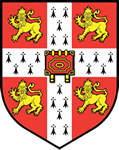Part 5: The role of morphology in theories of phonology and syntax
Chapter 20: The role of morphology in Generative Phonology, Autosegmenatal Phonology and Prosodic Morphology
Chapter 21: The role of morphology in Optimality Theory
Chapter 22: The role of morphology in Transformational Grammar and its descendents
Chapter 23: The role of morphology in constraint-based lexicalist grammars
Chapter 24: The role of morphology in Dependency Grammar
The last two parts of the book examine morphological theory in a wider context. Part 5 explores the implications of morphological theory for frameworks developed to account for specifically phonological and syntactic phenomena. Two chapters focus on the role morphology plays in major phonological frameworks. The first of these compares the assumptions and consequences of Generative Phonology, Autosegmental Phonology and Prosodic Phonology. Optimality Theory (OT), a framework initially developed to account for phonological phenomena, has also been used for morphological analysis, and a separate chapter on OT as a morphological framework is accordingly included. For the role of morphology in syntactic theory, we include special chapters on Transformation Grammar and its descendants, constraint-based lexicalist theories (HPSG and LFG), and Dependency Grammar. As with Part 4, chapters are framed by specific morphological issues—whether the lexeme or the morpheme is assumed to be the minimal sign, where morphology is positioned, what features are assumed, and so on.
Jump to:
Part 1: Foundations of morphological theory
Part 2: Issues in morphological theory
Part 3: Morphological principles
Part 4: Morphological frameworks
Part 6: Domains for the evaluation of morphological theories
Appendix: Sources and resources for morphological research

